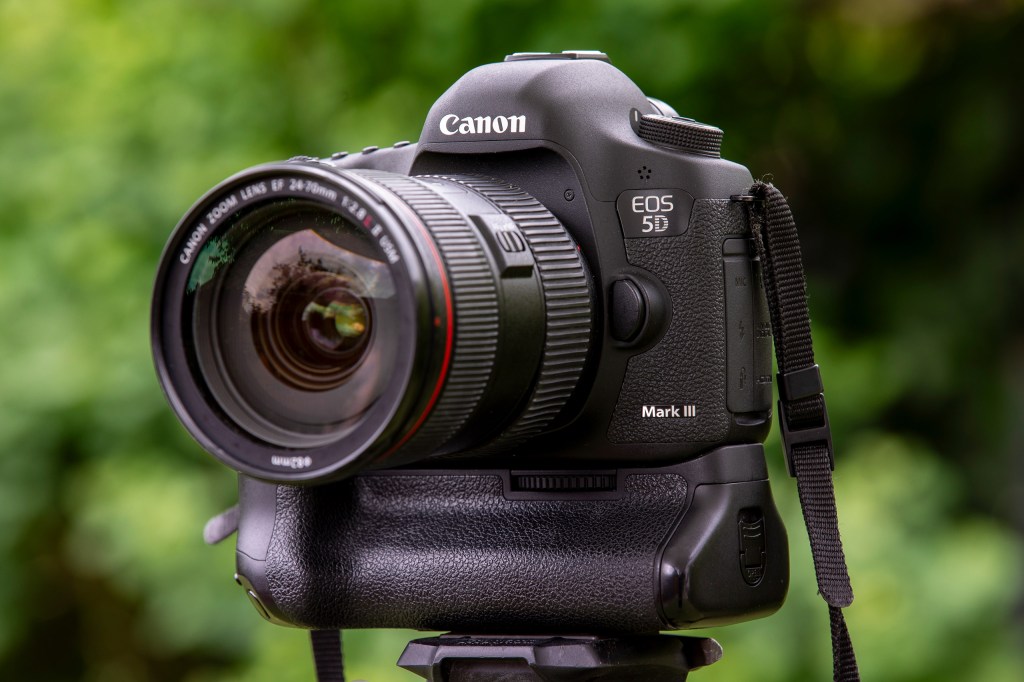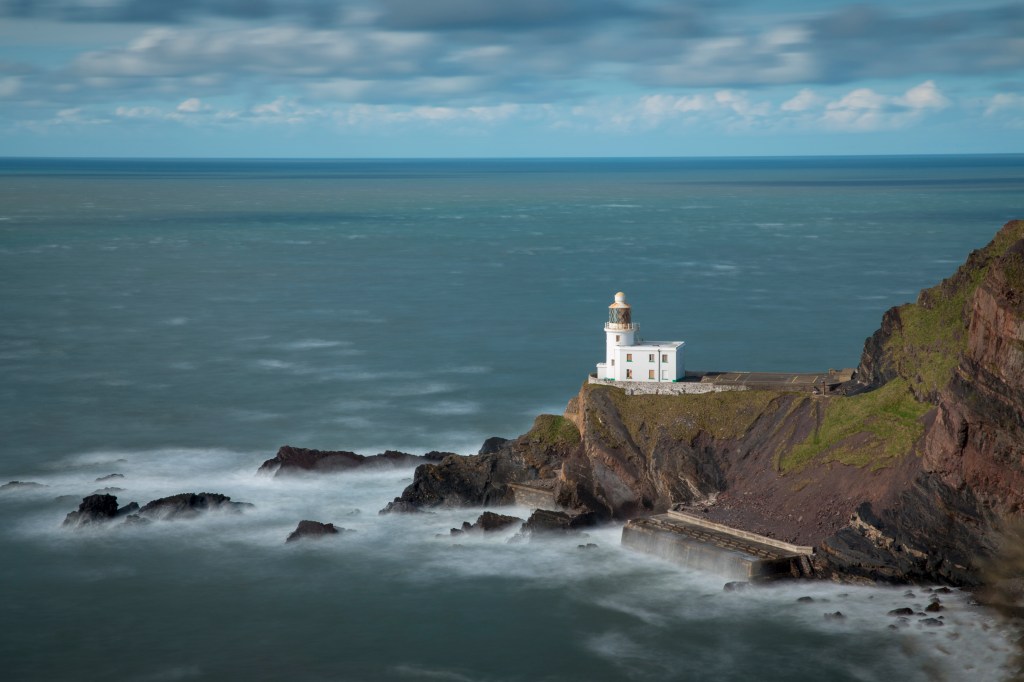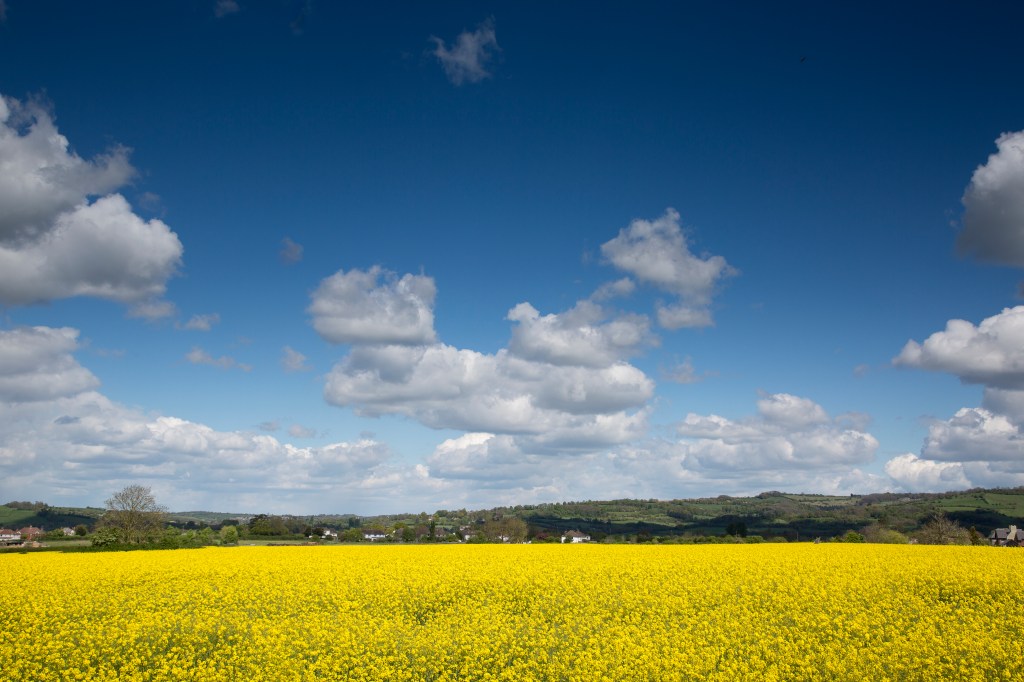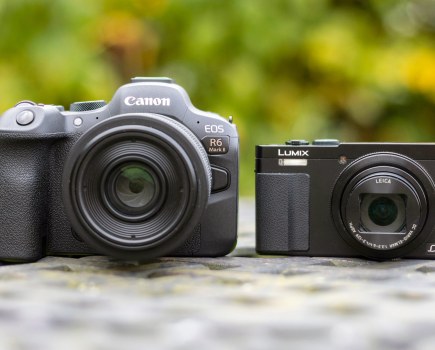When Canon, Nikon, Sony or whoever release a new camera, the old cynic in me tries not to be completely dazzled by all the new hi-tech specs – instead, I look at what’s been left out. Canon’s latest flagship EOS R1? Exceptional camera, incredible AI specs and image upscaling specs etc, but it’s only 24MP, which also means no 8K video.
Manufacturers never want to produce the perfect camera that has everything, otherwise you’d never buy another camera again! However, in 2012, when Canon released the EOS 5D Mark III, it produced a masterpiece. It appeared to be the camera that had everything, and could shoot anything.
At the time, the EOS 5D Mark III was truly ground-breaking: 22.3-megapixel full-frame sensor, 61-point autofocus for sharper shots, fast burst rate for action, advanced metering for better exposures in all lighting conditions, high ISO performance maxing out at ISO25,600, and Full HD video with full control over frame rate and audio. All in an easy-to-handle body.
The full-frame 22.3MP sensor produces large 5760 x 3840 pixel images, big enough for professional advertising photographers, while its tonal range is brilliant for all types of scenic photography. It’s also an ideal pro camera size to shoot portraits handheld on location or the studio, and just captures wonderful skin tones. The image quality of the RAWs just looks different! Editing the RAWs in Adobe Camera Raw software is still a joy.
As a Canon professional photographer, and former editor of the No.1 Canon magazine for over a decade, I’ve tried and tested every Canon EOS camera you can think of. Even the EOS 77D that nobody remembers. Shooting with the latest R1 and R5 Mark II is great fun, and their unbelievable AI autofocus modes make our lives so much easier when photographing anything that moves – from kids who won’t sit still to jumpy wildlife. You certainly can’t fault the image results with the latest kit, but using these hi-tech cameras can sometimes leave you cold.
Especially when you feel detached from the camera as you’re using the rear screen to compose and focus. Using a DSLR with a proper viewfinder, choosing your own focus points, creates more of a connection between you and your subject or scene. It’s simply a more pleasing way to take photos.
So when I’m asked: “What’s been your favourite Canon camera you’ve ever used?” It’s not the very latest mirrorless gear that springs to mind. It’s a classic DSLR. If I’m honest, I’ve never stopped loving my trusty Canon EOS 5D Mark III. Which is why I still occasionally use it to this day, and perhaps you should be using one too! Here are five key reasons why it’s still an incredible camera that can still do it all…
1. Ergonomic excellence
The EOS 5D Mark III is so nice to handle and shoot with. All the buttons and controls are just in the right place, they just become second nature to change without taking your eye from the viewfinder. The body fits in the hands so naturally. It feels even better with a battery grip, which makes it a pleasure to quickly switch to vertical format, using the second shutter button and back-button focus, when taking portraits of people or wildlife. This also extends the battery life, so I don’t have to worry about carrying a second battery, such as when I’m shooting landscapes on a cold evening with the Live View screen on full-time.
2. Faultless full-frame sensor
The EOS 5D Mark III’s images are simply beautiful, with fantastic skin tones in portraits, and great tonal range for landscapes. This is helped by the 63-zone Dual Layer metering which helps you take better exposures in all lighting conditions, such as low-light for landscapes or at night in the city. I also find, when using my range of L-series lenses, my shots are sharp as a tack 99% of the time. The 5D Mark III has 61 AF points, with 41 cross-type AF points at f/4, and 5 dual cross-type at f/2.8. Plus the 6fps burst rate is still fast enough to keep up with most action sports. Sometimes you just don’t need 30fps, or want to have to wade through thousands of very similar images in front of your computer screen post shoot!
3. Whatever the weather
The 5D Mark III might not have the top-pro 1D-series bullet-proof body, but that doesn’t matter, this camera is still tough as old boots, and water and dust resistant. I’ve shot in the worst weather the Isle of Skye can offer all in one day (probably the best test of camera kit on the planet), plus in the extreme cold on snowy ski shoots in the Alps for action, the midday heat of Granada for cityscapes, and humidity of a hot-house for macro shots of butterflies, and the 5D Mark III never let me down. While you head for cover when using your shiny new and expensive mirrorless camera during a downpour, with an old and cheap 5D Mark III, you can stay out and get the shots everybody else is missing, and not worry about it!
4. The digital level is in the detail
Bear with me here. This is a small yet important point. As a working professional, the electronic spirit level on a camera is a feature I use more than anything else when I’m taking photos, from landscapes and cities, to interiors of property, and even just when photographing box-shaped products for clients in my studio. The items or scenes need to be both perfectly level and parallel to my camera’s sensor. Nothing says unprofessional quicker than a wonky horizon, tall building leaning back, or product not looking straight to the eye. The Canon EOS 5D Mark III has a full-width digital level on its 3.2in LCD screen, with no other icons or info in the way. It makes adjusting your tripod head so easy as you ensure your shot is level and ‘square-on’. Compared to using the tiny digital level on a newer EOS R5’s screen, for example – it’s so small on a cluttered screen, it makes it fiddly/almost impossible to try and get your horizons level.
5. Ridiculously good value today
The Canon EOS 5D Mark III cost $3499 / £2999 when launched in 2012. Obviously you can’t still buy the 5D Mark III as a new model from Canon. But the good news is used 5D Mark III bodies are available for less than $500/£500, and these are in excellent condition, with low shutter counts around ~25,000 (if you shop around), or just search online resellers like MPB.com. This really is amazing value for money when you think about how much camera you’re getting for under $500/£500. Plus it will enable you to spend the money you’ve saved on better lenses!
The Canon EOS 5D Mark III always has been, and still is today, a cracking full-frame camera. This is why I’ve still got mine, it is often still my back-up body I carry on shoots, and I have no intention of ever selling it.
The views expressed in this column are not necessarily those of Amateur Photographer magazine or Kelsey Media Limited. If you have an opinion you’d like to share on this topic, or any other photography related subject, email: [email protected]

















